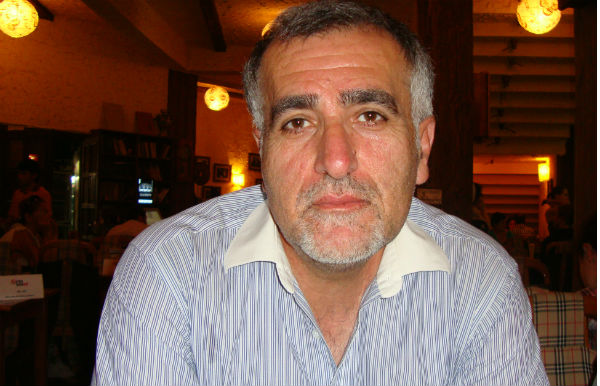To a great extent, deciding the definition of free or not free media is very difficult. Every country has its own policy. For example, all the TV channels in the Islamic Republic of Iran are state-owned, and this is one of the ways in which Iran is trying to resist pressure from other countries (particularly the United States). Countries like Iran, where there are questions of nuclear energy, are subjected to pressure from the rest of the world and are forced to put certain limits on the media. The same can be said about Armenia, where, as you know, coverage of the Karabakh issue is strictly regulated.
I’ve been working in Armenia for eight years as a correspondent for IRIB, Iran’s national channel. In the past I’ve been a live broadcaster for the program Radiodzam (“radio hour”), which presents and discusses the issues of the Iranian-Armenian community.
I can safely say that ideas formed about Iran in Armenia are incorrect. Everyone points out Iran’s strict censorship but ignores the fact that, when it comes to film, Iran today has a lot to say to the world. For example, last year Asghar Farhadi’s film, Nader and Samin: A Separation, won not only a Golden Apricot, a Golden Bear, and a Golden Globe, but also an Oscar. A large number of Iranian films are being shown around the world this year as well (Iran also has quite a developed chain of cinemas). What I’m trying to say is that even in conditions of censorship, our art, culture, and film are developing and doing a better job at representing today’s Iran than the media.
In general, Persian culture helps greatly in forming a notion about Iran. It is very interesting and diverse, particularly the poetry, which has entered our daily lives and has passed on its extraordinary language to ordinary people. That poetic language encourages people to think, to ponder, instead of accepting the given answer to their question as the only answer. And Iranian films create an opportunity to become a part of the cultural process. The most important thing is that the filmmakers respect the viewer.
Although I myself work in the TV industry, I seldom watch television — I get more information from the Internet. It is a more practical space because it’s not you who adapts to the Internet but the Internet that adapts to you. However, it is clear that Armenian TV channels are all very similar: the remarks, the questions and answers, the formats of the shows, even the hosts are all the same. In Iran, of course, there are no private channels (ways of creating cable channels are currently being discussed); however, every Iranian channel has its own focus — be it culture, youth, sports, or economics.
To tell the truth, it pains me greatly that there are few bridges of information between Iran and Armenia. For example, our channel makes a great effort to accurately present Armenia to Iranians. We prepare 10-15 reports on Armenia every month. They aren’t just political reports, but also manifold reports about Armenia’s economy, art, and festivals. Our last video, for example, was about the development and production process of making Armenian cheese…IRIB has a large group of correspondents working abroad who present what’s happening in the world to Iranians.
I think Armenia, in particular, really needs journalists who work abroad. Why? Because having an Armenian diaspora of several million is more than enough to create interesting content. And that has to be done by talking about not only other countries, but also the Armenians who live there. I have noticed that Armenians in Armenia know very little about the problems and achievements of their fellow Armenians who live in different corners of the world. On television in Armenia today, you will rarely see programs that represent the problems of Persian-Armenians or Syrian-Armenians: regular coverage of their lives is absent from the media. I think, this can be rectified if there’s a state policy aimed at making the Armenian diaspora part of Armenia’s present.
The scope of questions raised by the media in Armenia is very narrow. For example, Armenians in Armenia have almost no information what the five thousand Iranians who live in Armenia do, what fields they work in… There is no coverage, no discussions…
As a reporter of Iran’s state channel, I ultimately play a role in strenghtening the ties between Armenia and Iran, and I am obliged to accurately present Armenia to Iran. It is known that there is a treaty between our two countries when it comes to journalism, but I don’t know why it’s one-sided, and why no reporters from Armenia have gone to work in Iran.
George (Gevorg) Abrahamyan
Journalist, Iran
School: Tovmasyan Armenian School of Tehran
University: Studied Armenian language and literature at Yerevan State University
Favorite film: Asghar Farhadi’s Nader and Simin: A Seperation
Favorite Author: Aksel Bakunts
Favorite Music: The list goes on
Favorite expression: “There are many good expressions, but right now I want to say nice to meet you. It’s very nice to become acquainted with new people and new countries.”






